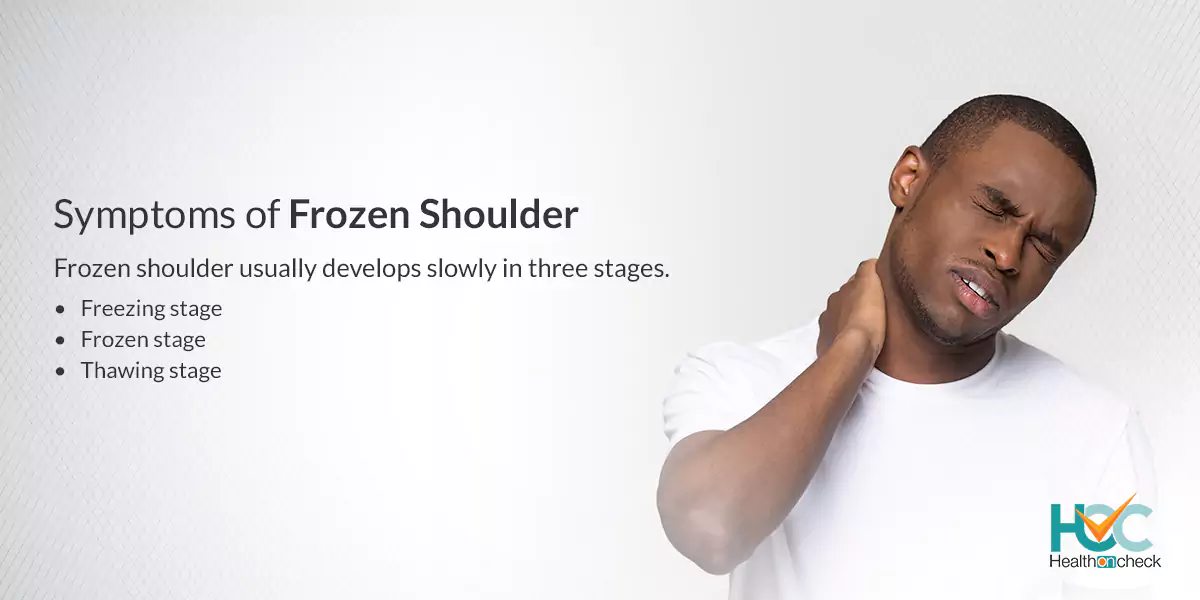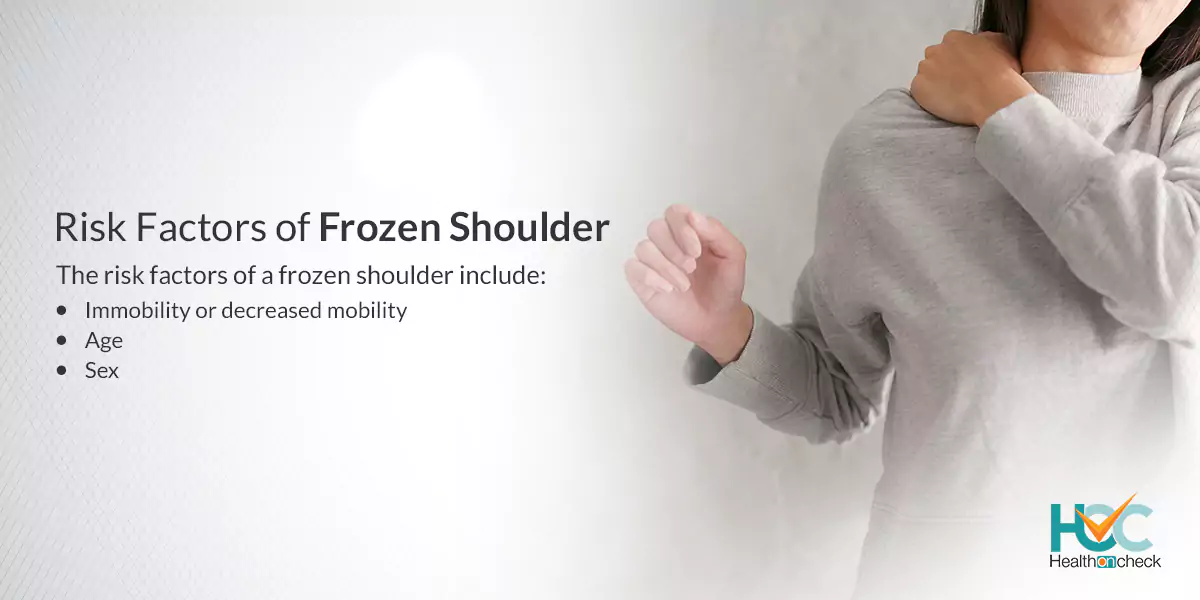What is a Frozen Shoulder?

If you have a frozen shoulder, also known as adhesive capsulitis, you feel pain and stiffness in your shoulder joint. Signs and symptoms usually start slowly, then worsen and the symptoms get better, generally within 1 to 3 years. A frozen shoulder happens when the strong connective tissue bordering the shoulder joint (known as the shoulder joint capsule) becomes stiff, thick, and inflamed. The joint capsule contains the ligaments attaching the top of the upper arm bone [humeral head] to the shoulder socket [glenoid], strongly holding the joint in place. The condition is called “frozen” shoulder because the more pain that is felt, the less likely that you will use the affected shoulder, and not using the shoulder enough leads to the shoulder capsule becoming thick and tight, which makes the shoulder even more difficult to move, hence it’s “frozen” in its position.
What are the Symptoms of a Frozen Shoulder?
Frozen shoulder usually develops slowly in three stages.
– Freezing stage
At this stage, even a single movement of the shoulder results in pain, and the shoulder’s capability to move becomes limited.
– Frozen stage
In this stage, the pain lessens but the shoulder becomes stiffer and makes it difficult to use.
– Thawing stage
Here the ability of the shoulder to move starts to improve.
The pain worsens at night for some people which sometimes disrupts sleep.
What are the Causes of Frozen Shoulder?
The shoulder joint is confined to a capsule of connective tissue. Frozen shoulder happens when this capsule tightens and thickens near the shoulder joint, and restricts its movement.
It’s not clear why it occurs to some people. But it’s more likely to occur after keeping a shoulder still for a long time, like after an arm fracture or surgery.
What are the Risk Factors of Frozen Shoulder?
The risk factors of a frozen shoulder include:
– Age
People 40 and older are more likely to have frozen shoulders.
– Sex
Women are more prone to have frozen shoulders than men.
– Immobility or decreased mobility
People who keep their shoulders still for a long period are at higher risk of developing frozen shoulders. Restricted movement might occur due to several factors, including:
– Rotator cuff injury
– Broken arm
– Stroke
– Recovery from surgery
– Systemic diseases
People with certain diseases have an increased risk of developing frozen shoulder including:
-Diabetes
– Overactive thyroid (hyperthyroidism)
– Underactive thyroid (hypothyroidism)
– Cardiovascular disease
– Parkinson’s disease
What are the Complications of Frozen Shoulder?
If untreated, frozen shoulder can lead to complications such as:
– Shoulder pain
– Loss of mobility
– Decreased range of motion
– Muscle trouble that might worsen and continue for a long period
– Complete immobilization
How a Frozen Shoulder is Diagnosed?
Your doctor will carry out a physical exam to diagnose a frozen shoulder. During the physical exam, you might be asked to move your arm in some specific patterns. It is to examine pain and check how far you can move your arm and then you might be asked to relax your muscles while your doctor will move your arm (passive range of motion). Frozen shoulder usually impacts both the active and passive range of motion.
A frozen shoulder can normally be diagnosed from signs and symptoms alone. Imaging tests including X-rays, ultrasound, or MRI are helpful to diagnose frozen shoulders and rule out other problems.
What are the Treatment Options Available for Frozen Shoulder?
Treatments of frozen shoulder usually include controlling shoulder pain and conserving as much range of motion in the shoulder as possible.
– Medications
Your doctor might prescribe pain relievers like aspirin and ibuprofen to reduce pain and inflammation linked with frozen shoulders. In some instances, stronger pain-relieving and anti-inflammatory drugs might also be prescribed.
– Therapy
During therapy sessions, a physiologist might teach you range-of-motion exercises to help you recover your shoulder movement.
– Surgical and other procedures
Frozen shoulders usually get better on their own within one to one and a half years. For serious or persistent symptoms, other treatments include:
– Steroid injections
Corticosteroids might be injected into the shoulder joint which can help reduce pain and improve shoulder mobility, specifically if it’s given immediately after the frozen shoulder starts.
– Hydrodilatation
Sterile water is inserted into the joint capsule to help stretch the tissue and make it simpler to move the joint. Sometimes it’s combined with a steroid injection.
– Shoulder manipulation
Here a medication known as a general anesthetic is given, so that you become unconscious and feel no pain. Then your doctor will move the shoulder joint in various directions to help loosen the tightened tissue.
Surgery
If other procedures are not working then surgery can help to remove scar tissue from inside the shoulder joint, though surgery is done very rarely.
Living with a Frozen Shoulder?
A frozen shoulder can make your life uncomfortable and you might find it difficult to carry out your daily activities. Frozen shoulders can also affect your performance at studies or work. Frozen shoulder usually gets well of its own in a year or two but since it impacts the way you live, you must take treatments so that you can start living a normal life once again.
Whom to Consult?
If you notice symptoms of a frozen shoulder then you should consult your doctor and start treatment as soon as possible. Simple treatments, including the use of pain relievers and shoulder exercises, along with a cortisone injection, are often enough to restore motion and function within a year or even less.






